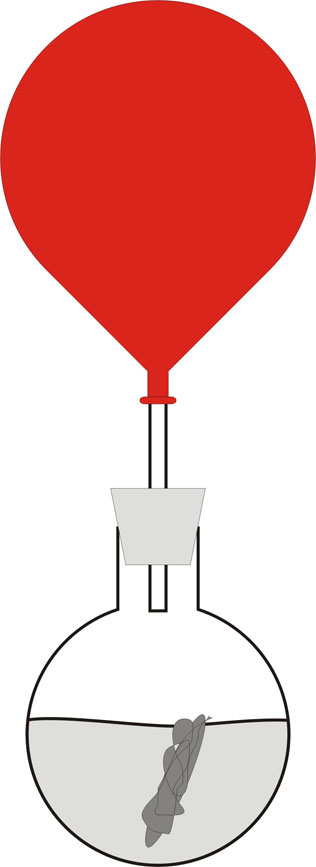A flask is filled with sodium hydroxide solution. A little ball of squashed aluminium foil is then put into the flask, and the liquid begins to bubble. A stopper is used to seal the flask, collecting the forming gas in a balloon connected by a tube. When the balloon is sufficiently filled, it is tied up and then lit with a match. With a rather loud bang, a fireball flashes before the audience; but it disappears as quickly as it appears.
How does it work?
Aluminium is highly reactive, so it is mixed with iron oxide in the foil, which is used for welding railway tracks as it can endure extremely high temperatures.
Aluminium’s reactivity explains why it is not found in its pure form in nature, but instead only in bauxite compounds in the earth’s crust.
Here the aluminium is reacting with the sodium hydroxide, releasing hydrogen to be captured in the balloon. Hydrogen is very flammable and allows the balloon to be explosively ignited.





























































































